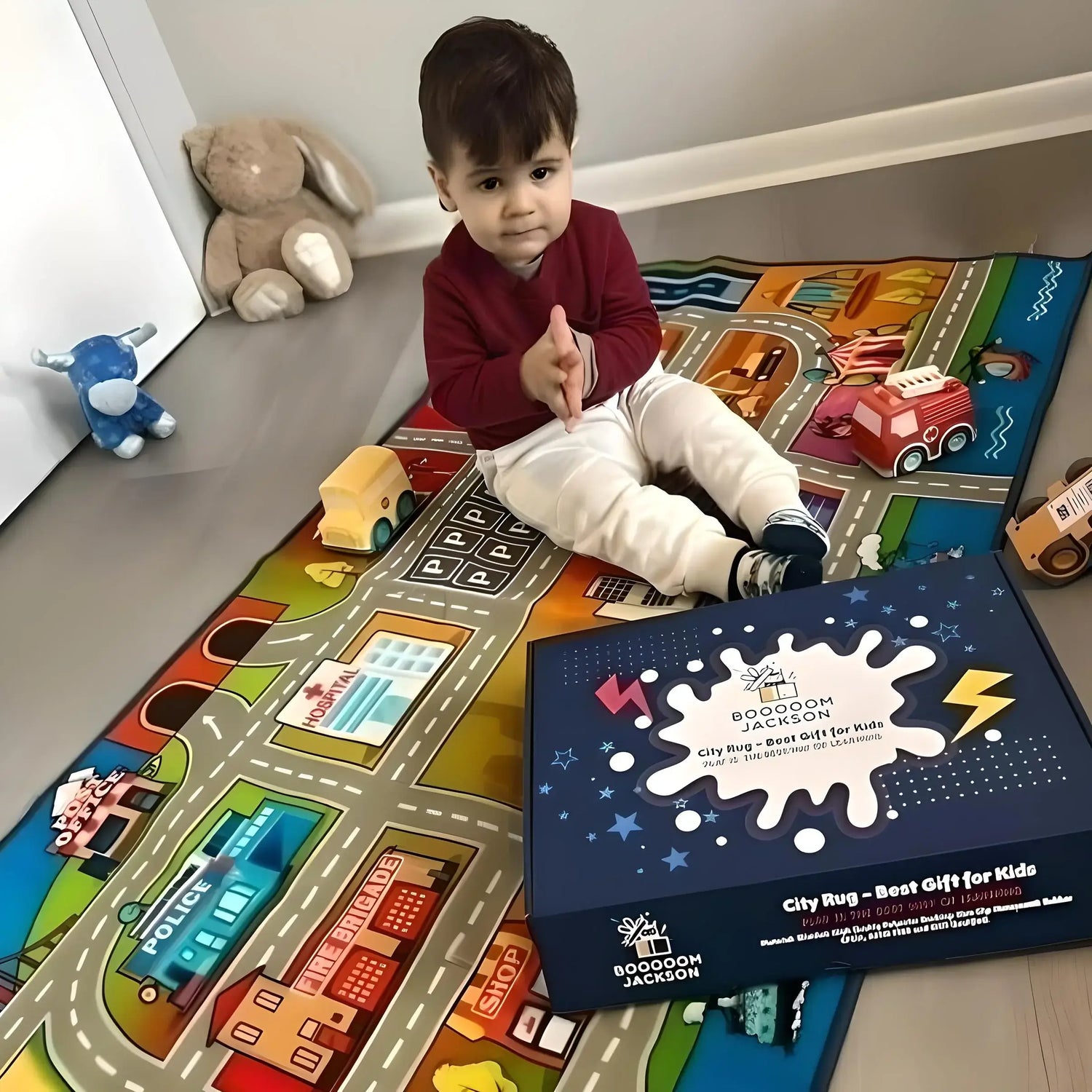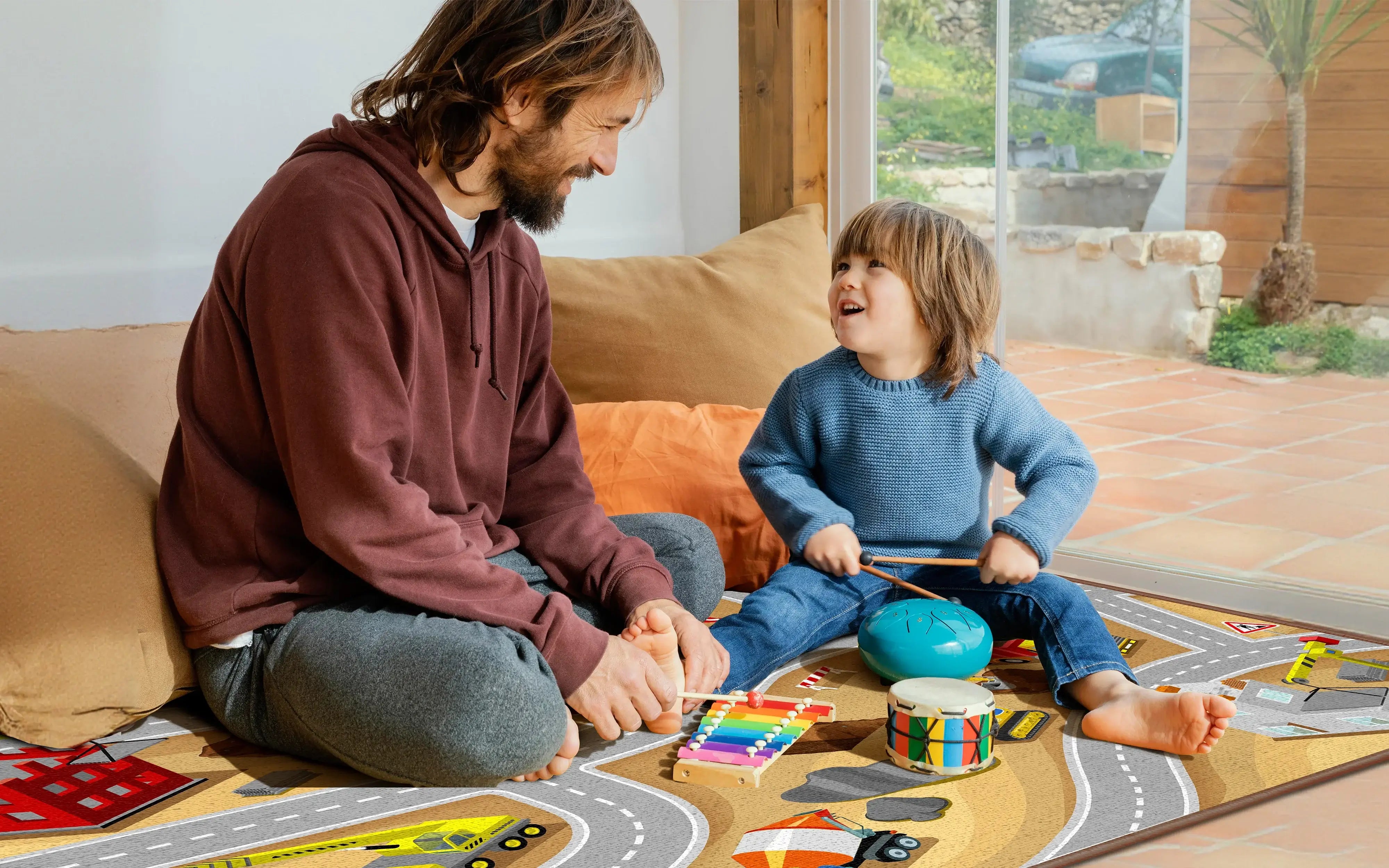The Critical Need for Cushioning Protection in Early Development
Every year, thousands of children under five are admitted to hospitals following preventable accidents, with falls being among the most common causes of serious injuries in babies and toddlers. According to recent safety data, over 40 children under five per week are admitted to hospital after falling down stairs, while the U.S. Consumer Product Safety Commission reports awareness of 79 infant deaths and 124 injuries between 2010 and 2022 associated with inadequate cushioning support.
During the crucial developmental stages when babies learn to crawl, pull up, and take their first steps, they face unique vulnerabilities. Their heads are proportionally larger and heavier than adults', making them more susceptible to head injuries from falls. Additionally, the soft spot on a baby's skull typically takes several months to fully close, leaving their developing brain particularly vulnerable to impact injuries.
Understanding Developmental Stages and Fall Risks
The Crawling Phase (6-12 Months)
When babies begin crawling, they enter a world of exploration fraught with potential hazards. Once they learn to crawl, babies may try to climb onto things, such as sofas, which increases the risk of falling. During this stage, babies spend significant time on the floor, making quality cushioning protection essential for preventing:
- Knee scrapes and bruises from rough surfaces
- Head bumps when babies lose balance
- Impact injuries from tumbling sideways or backward
- Abrasions from textured flooring materials
The Walking Phase (9-18 Months)
When babies start to walk, they're unsteady on their feet, but can move very quickly. They tend to trip and fall. This developmental milestone brings new challenges:
- Frequent tumbles as toddlers develop balance
- Higher fall impact due to increased height when standing
- Directional falls that can cause injury to different body parts
- Speed-related accidents as confidence outpaces coordination
The Exploration Phase (18 Months - 3 Years)
Toddlers in this phase combine mobility with curiosity, creating perfect conditions for accidents. As soon as they've learnt to walk, toddlers will start to climb and explore – it's a key part of their physical development. The need for comprehensive cushioning protection becomes even more critical.
How Quality Classroom Rugs Provide Essential Cushioning Protection
Advanced Safety Materials and Construction
Modern classroom rugs designed for child safety incorporate multiple protective features that go far beyond basic floor covering. Quality rugs like those from Booooom Jackson utilize:
Impact-Absorbing Materials: Durable nylon fibers combined with specialized backing systems create cushioning that absorbs the force of falls, significantly reducing injury severity.
Slip-Resistant Technology: Advanced slip-proof backing prevents accidents, with weighted bottoms that increase slip resistance by 80%. This feature is crucial for preventing the secondary injuries that often occur when children slip while trying to regain balance after a stumble.
Edge Protection: Reinforced edges prevent fraying and tripping hazards while maintaining cushioning integrity throughout the rug's lifespan.
Comprehensive Safety Standards Compliance
Quality classroom rugs must meet stringent safety requirements to ensure optimal protection for children:
CPSC Safety Standards: All rugs are rigorously tested to meet ASTM International and CPSC safety standards, ensuring they're made with non-toxic, eco-friendly materials free from PVC, phthalates, and lead.
Fire Safety Compliance: Professional-grade classroom rugs meet NFPA 253, Class I fire code regulations, ensuring safety in educational environments.
Hypoallergenic Properties: Quality rugs are hypoallergenic and resist dust mites, mold, and mildew, making them perfect for kids with allergies or asthma.
The Science Behind Effective Cushioning Protection
Impact Distribution and Energy Absorption
When a child falls, the energy from the impact must be absorbed or distributed to prevent injury. Quality classroom rugs accomplish this through:
Multi-Layer Construction: Professional rugs feature multiple layers that work together to absorb and distribute impact energy across a wider surface area.
Fiber Density Optimization: The density and arrangement of rug fibers create a cushioning matrix that compresses under impact, slowing the rate of deceleration and reducing injury risk.
Backing System Technology: Advanced backing systems provide dimensional stability while maintaining flexibility, ensuring consistent cushioning performance across the entire rug surface.
Surface Texture and Traction Balance
Effective cushioning protection requires balancing softness with appropriate traction:
Optimal Surface Texture: The rug surface must provide enough traction for developing motor skills while remaining soft enough to prevent abrasions during falls.
Moisture Management: Quality materials resist moisture absorption, preventing the development of slippery conditions that could increase fall risk.
Strategic Placement for Maximum Protection
High-Risk Area Coverage
Falls prevention strategies include providing a soft landing surface below playground equipment and removing fall hazards whenever possible. In indoor environments, strategic rug placement can significantly reduce injury risk:
Play Areas: Large rugs in designated play spaces provide comprehensive protection for active play and exploration.
Transition Zones: Placing rugs in areas where children move between different activities helps prevent falls during transitions.
Learning Spaces: Classroom rugs in educational areas protect children during seated activities and transitions to standing positions.
Size and Configuration Considerations
Full Coverage Protection: Larger rugs provide more comprehensive protection, reducing the likelihood that a child will fall on unprotected surfaces.
Edge Management: Proper rug sizing ensures edges don't create tripping hazards while maintaining maximum cushioned area coverage.
Traffic Pattern Analysis: Understanding how children move through spaces helps optimize rug placement for maximum protective benefit.
Real-World Protection Benefits
Documented Safety Improvements
Quality rugs are designed to spark creativity, motor skills, and teamwork, with toddlers practicing balance and color recognition while older kids invent stories and solve challenges. The protective benefits extend beyond injury prevention:
Confidence Building: Children who feel secure on cushioned surfaces are more likely to engage in healthy physical development activities.
Reduced Injury Severity: When falls do occur, quality cushioning significantly reduces the severity of resulting injuries.
Parent and Educator Peace of Mind: Knowing children are protected allows adults to encourage healthy exploration and development.
Long-Term Developmental Support
Motor Skill Development: Safe cushioning allows children to practice crawling, walking, and balance skills without fear of injury.
Social Interaction: Protected play environments encourage group activities and social development.
Cognitive Growth: Reduced anxiety about potential injuries allows children to focus on learning and exploration.
Maintenance and Longevity for Continued Protection
Easy Care Requirements
Quality rugs can be easily cleaned with a regular vacuum cleaner – no special equipment needed. This easy maintenance ensures:
Consistent Protection: Regular cleaning maintains cushioning properties and surface integrity.
Hygiene Standards: Simple care requirements make it easier to maintain sanitary conditions for children's health.
Cost-Effective Safety: Durable, easy-care rugs provide long-term protection value.
Durability Features
Fade Resistance: Durable nylon fibers resist fading, while reinforced edges prevent fraying, ensuring consistent appearance and safety performance.
High-Traffic Performance: Professional-grade construction withstands the demands of active children without compromising protective qualities.
Extended Lifespan: Quality materials and construction provide years of reliable cushioning protection.
Choosing the Right Cushioning Protection
Essential Safety Features Checklist
When selecting classroom rugs for cushioning protection, prioritize these critical features:
Safety Certifications: Look for CPSC, ASTM International, and other relevant safety standard compliance.
Material Safety: Ensure rugs are free from toxic materials including PVC, phthalates, and lead.
Slip Resistance: Verify backing systems provide adequate slip resistance for your specific environment.
Fire Safety: Confirm compliance with appropriate fire safety codes for your facility type.
Size and Design Considerations
Age-Appropriate Features: Choose rugs designed for the specific age groups using the space.
Environmental Factors: Consider room size, traffic patterns, and activity types when selecting rug dimensions.
Educational Integration: Many protective rugs offer educational features that support learning while providing safety benefits.
The Economics of Protection: Investment vs. Risk
Cost-Benefit Analysis
The baby safety products market is expected to reach USD 270.45 billion in 2025, driven by growing parental awareness about infant safety and the recognition that quality safety products provide long-term value.
Direct Cost Savings: Quality cushioning protection reduces medical expenses from preventable injuries.
Liability Reduction: Educational facilities benefit from reduced liability risk through proactive safety measures.
Insurance Benefits: Many insurance providers offer reduced premiums for facilities that demonstrate comprehensive safety measures.
Long-Term Value Proposition
Durability Investment: Quality rugs provide years of protection, making the cost per day of safety coverage remarkably low.
Multi-Use Benefits: Educational rugs serve both protective and pedagogical functions, maximizing investment value.
Peace of Mind Value: The psychological benefits of knowing children are protected cannot be quantified but are invaluable.
Emerging Trends in Cushioning Protection
2025 Safety Innovation
The next decade offers much more change with AI-powered monitoring systems and the integration of smart-home devices, paving the way for automated safety systems. Current trends include:
Eco-Friendly Materials: Growing demand for eco-friendly and hypoallergenic materials drives innovation in organic cotton and bamboo-fiber safety products.
Enhanced Performance: New manufacturing techniques create rugs with improved cushioning properties while maintaining durability.
Smart Integration: Some rugs now incorporate technology features for enhanced safety monitoring and maintenance alerts.
Regulatory Evolution
Stricter Standards: Safety regulations continue to evolve, requiring enhanced protective features in children's products.
Testing Requirements: More rigorous testing protocols ensure better protection for children across all developmental stages.
Material Restrictions: Ongoing research leads to restrictions on potentially harmful materials in children's products.
Creating Comprehensive Protection Environments
Multi-Layer Safety Approach
Effective cushioning protection works best as part of a comprehensive safety strategy:
Environmental Assessment: Consider anti-slip rugs for floors and keep hallways and stairs well-lit and clear of clutter.
Furniture Positioning: Move chairs, cribs and other furniture away from windows and secure TVs and furniture to walls using mounts and brackets.
Active Supervision: Quality cushioning supplements but never replaces appropriate adult supervision.
Integration with Learning Environments
Educational Value: Interactive learning opportunities can be integrated with protective features for comprehensive benefit.
Flexible Arrangements: Modular approaches allow adaptation as children grow and safety needs evolve.
Community Standards: Working with other educators and parents ensures consistent safety approaches across environments.
Special Considerations for Different Environments
Home vs. Educational Settings
Home Applications: Residential use focuses on high-traffic family areas where children spend the most time.
Educational Facilities: Schools and daycares require commercial-grade protection that meets institutional safety standards.
Multi-Use Spaces: Areas serving multiple functions need flexible protection solutions that adapt to different activities.
Special Needs Considerations
Enhanced Protection Requirements: Some children may require additional cushioning protection due to medical conditions or developmental considerations.
Sensory Considerations: Children with sensory processing differences may benefit from specific texture and cushioning properties.
Accessibility Features: Ensure protective features don't create barriers for children with mobility challenges.
Future-Proofing Your Protection Investment
Adaptable Solutions
Modular Systems: Choose protection solutions that can be reconfigured as needs change.
Expandable Coverage: Plan for the ability to add protection as spaces and requirements evolve.
Technology Integration: Consider how current choices will accommodate future safety technology developments.
Continuous Improvement
Regular Assessment: Periodically evaluate protection effectiveness and upgrade as needed.
Feedback Integration: Use observations of children's interactions with protective features to guide improvements.
Industry Updates: Stay informed about new safety research and product developments.
Conclusion: The Foundation of Safe Development
Cushioning protection through quality classroom rugs represents a fundamental investment in children's safety and development. As babies learn to crawl and toddlers master walking, the soft, secure foundation provided by properly designed and maintained rugs can mean the difference between a minor tumble and a serious injury.
With features like slip-proof backing, non-toxic materials, and rigorous safety testing that meets ASTM International and CPSC standards, quality classroom rugs provide the protective foundation that allows children to explore, learn, and grow with confidence.
The investment in proper cushioning protection pays dividends not just in injury prevention, but in the peace of mind that allows children, parents, and educators to focus on what matters most: healthy development, joyful learning, and the natural wonder of childhood exploration.
By choosing safety-certified classroom rugs that prioritize cushioning protection, you're not just purchasing a floor covering – you're investing in a child's safety, confidence, and developmental success. In a world where every precaution matters, quality cushioning protection provides the secure foundation upon which bright futures are built.




Leave a comment
This site is protected by hCaptcha and the hCaptcha Privacy Policy and Terms of Service apply.